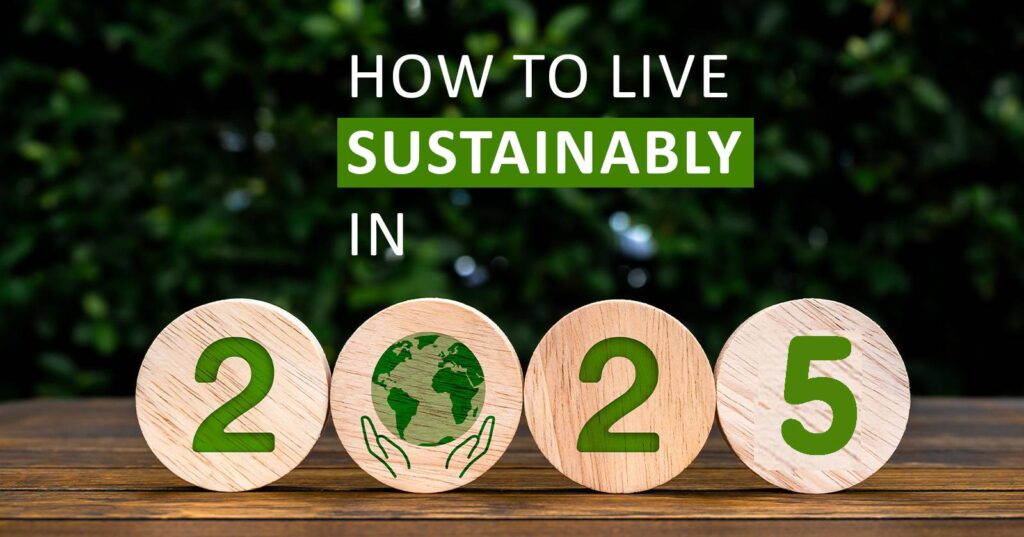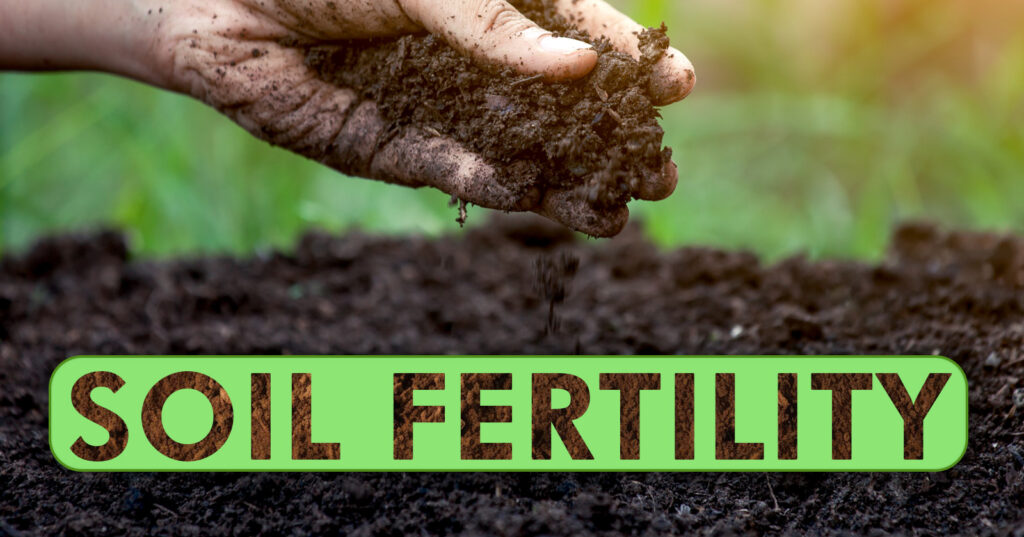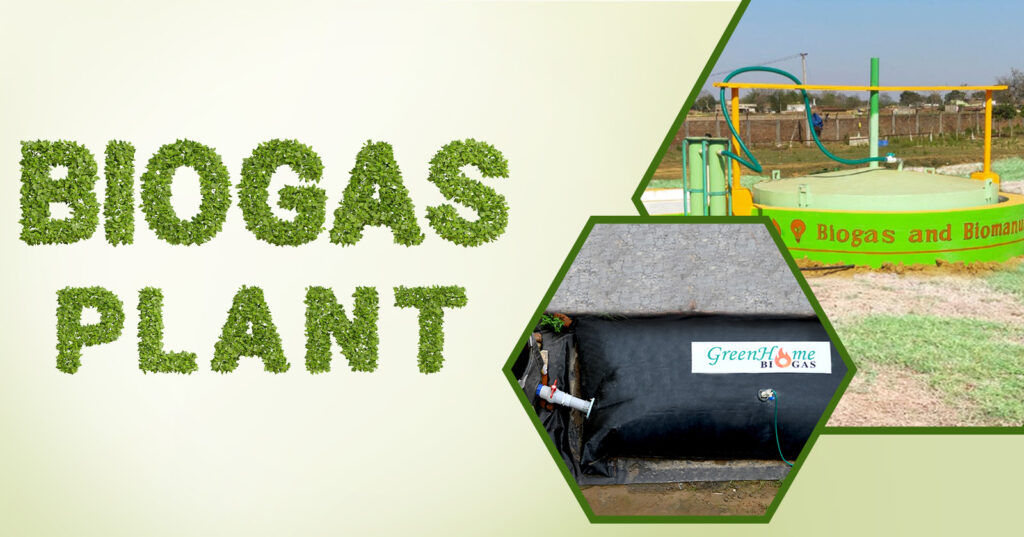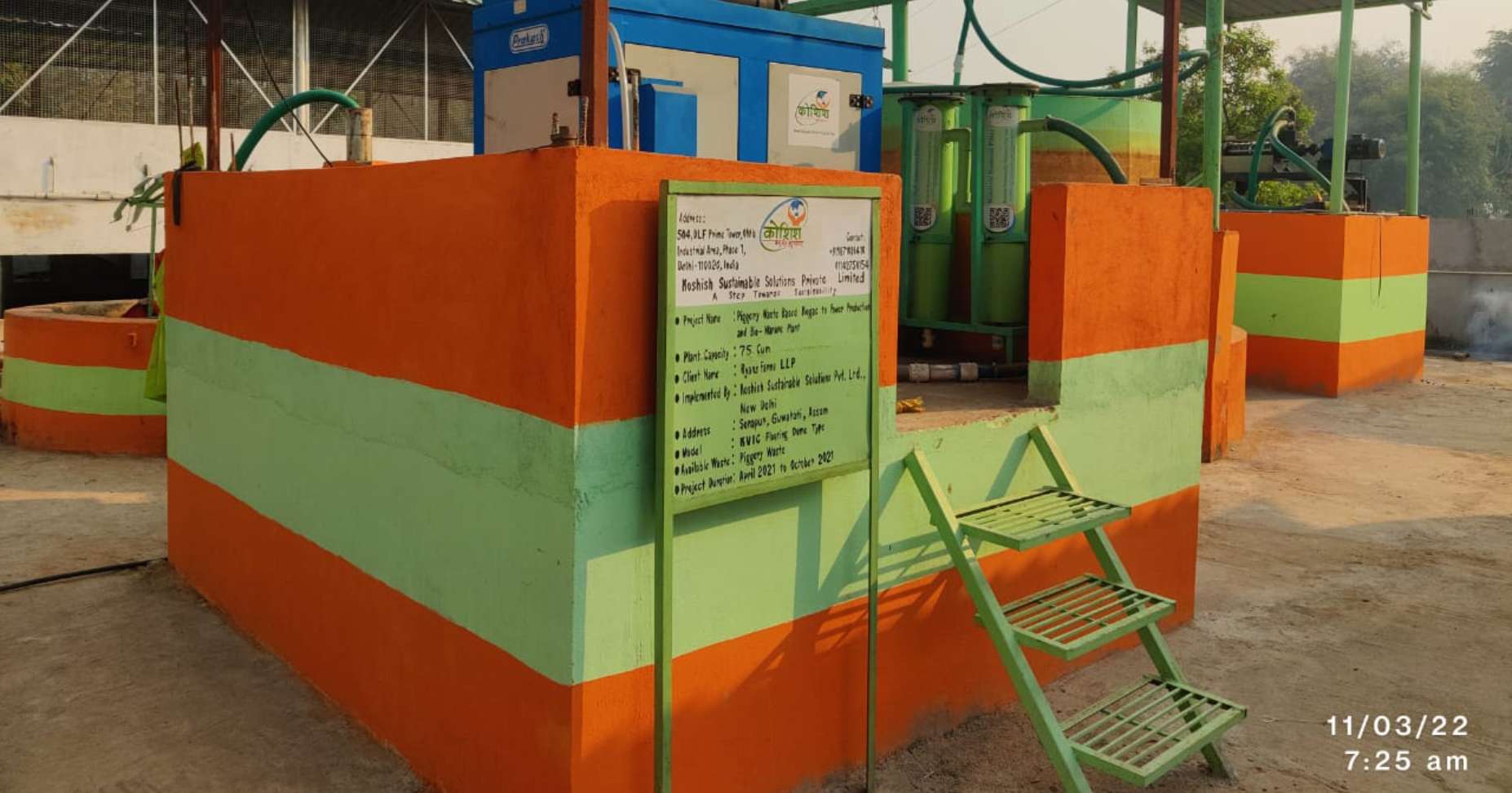To reduce greenhouse gas emissions, reduce global warming, and reduce dependence on fossil fuels, promoting renewable energy is crucial. One effective way is to convert biomass and organic waste into energy.
Biogas technology is important because livestock waste produces a lot of greenhouse gases that cause climate change. Many countries are encouraging biomethanation technology to tackle this problem.
According to the National Dairy Development Board (2019), India had about 192.5 million cattle and 109.9 million buffaloes. The UN Food and Agriculture Organisation reports that animal waste produces around 55–65% of global methane emissions, which have 21 times more warming potential than carbon dioxide.
If cow dung is not managed properly, it can pollute the environment and spread diseases. Proper manure management can greatly reduce methane emissions, since dung left in open piles releases a lot of methane every year.
Biomethanation Plant
Biogas plants can be built based on the type and amount of waste available and the gas required.
Using or burning raw cattle dung releases greenhouse gases and CO₂, polluting the environment.
Burning biogas is clean, safe, and cheaper than LPG. It reduces indoor pollution and prevents health problems.
Biogas plants also help fight climate change by using methane as fuel, cutting harmful emissions, and reducing the need for coal and oil.
Economic Viability
Setting up a biogas plant can be costly, but to promote sustainability, the Government of India offers subsidies ranging from ₹25,000 to ₹5 crore. The typical payback period for a biogas plant is about 3–4 years.
Along with providing clean energy and organic manure, biogas plants help reduce greenhouse gas emissions and global warming. They also allow owners to earn carbon credits, which can be encashed yearly, making biogas plants both environmentally and economically beneficial.
Components of a Dairy Farm Biogas Plant
A dairy farm biogas plant has a mixing tank, inlet pipe, digester, gas holder, outlet pipe, and gas pipeline. Cow dung is mixed with water in the tank and sent to the digester, where it produces biogas. The gas is stored in the gas holder and sent through pipes to where it is needed.
Mixing Tank:
It is the first part of the biogas plant, where cow dung and water are mixed to form a uniform slurry. Proper mixing ensures that the digestion process in the next stage is efficient and produces maximum biogas.
Inlet Pipe:
The slurry from the mixing tank flows through the inlet pipe into the digester. This pipe ensures a smooth transfer of the mixture without any wastage.
Digester:
The digester is a closed tank where the slurry ferments without oxygen. Bacteria break down the waste, producing biogas and leaving a nutrient-rich slurry called digestate, which can be used as fertilizer.
Gas Holder:
The biogas from the digester is stored in the gas holder, usually a dome or cylinder. It keeps a steady supply of gas ready for use whenever needed.
Outlet Pipe:
After digestion, the leftover slurry, called digestate, comes out through the outlet pipe. It is full of nutrients like nitrogen, phosphorus, and potassium, making it the best natural fertilizer for crops and gardens.
Gas Pipeline:
The biogas is transported from the gas holder through the gas pipeline to its point of use. It can be used for cooking, heating, lighting, or even running generators to produce electricity, providing a clean and renewable energy source for the farm.
Biogas as an alternative to LPG for cooking
With LPG prices constantly rising and becoming unaffordable for many, biogas offers a cheaper and eco-friendly alternative. The gas produced from cattle dung also helps protect the environment.
Biogas as an alternative to electricity
Dairy processing units use a lot of electricity for equipment and food processing. These power costs can be reduced by converting biogas into electricity using a biogas genset.
Biogas as an alternative for pollution-free fuel
If a dairy farm produces a large amount of biogas from cattle dung and other organic waste, it can be upgraded to CBG (Compressed Biogas), which is like CNG. This can be used as vehicle fuel or sold in cylinders to restaurants and industries.
Nutrient Rich BioManure and other Bioproducts
The slurry left after biogas production is called “black gold” because it’s rich in nitrogen, phosphorus, and potassium, making it an excellent fertilizer that can be sold to farmers.
Table – I Composition of Biogas Slurry/Vermicompost/ Cow Dung
| Slurry Type | Nitrogen (%) | Phosphorus (%) | Potash (%) |
| Digested Slurry | 1.5 – 2.0 | 1.0 | 1.0 |
| Vermicompost | 0.5-1.5 | 0.1 – 0.30 | 0.15 – 0.56 |
| Cow Dung | 1.19 | 0.3 | 0.48 |
The nutrient-rich bio-manure can be further processed into Phosphate Rich Manure (PROM), which can replace chemical fertilizers like DAP and keep soil fertile naturally.
Income from a biogas system mainly comes from the electricity produced and the sale of raw or processed manure.
Biogas plants benefit everyone but are especially useful for dairy farms, which can use the gas for cooking, running generators, and fertilizing crops, or sell the surplus.
A farm with 100 cows can benefit from the following.
| Biogas Produced | 16kg/ day |
| Annual Power Generation | 60 Units of Power per day |
| Central Financial Subsidy | 3.5 Lakhs (approx.) |
| Carbon Credit Claim (Annually) | 0.20 Lakhs |
| Bio Slurry obtained (Annually) | 2400 kg/yr. |
| Revenue Generated from Manure Sales (Cost @ Rs.1/ kg) | INR 24000/ yr. |
| Value-added products from BioManure | |
| PROM | INR 10/kg. (Approx.) |
Proper cow dung management helps farm owners earn income, reduce greenhouse gas emissions, and comply with pollution control regulations.
Wrapping Up
Setting up a biogas plant provides dairy farms with many benefits. It provides clean and cost-effective energy for cooking, electricity, and vehicles, reduces dependence on fossil fuels, and helps to reduce methane emissions.
The nutrient-rich slurry can be used as organic fertilizer or processed into PROM, creating additional income. With government subsidies, carbon credit opportunities, and potential revenue from manure and bio-products, biogas plants are affordable and eco-friendly, making them a wise choice for sustainable dairy farming.
Frequently Asked Questions (FAQs)
Question: What is a biogas plant and how does it work?
Answer: A biogas plant converts cattle dung and other organic waste into biogas through anaerobic digestion. The gas can be used for cooking, electricity, or as fuel, while the leftover slurry serves as nutrient-rich fertilizer.
Question: How can dairy farms benefit from a biogas plant?
Answer: Dairy farms can save on cooking gas and electricity, reduce greenhouse gas emissions, produce organic fertilizer, generate additional income by selling manure or processed bio-products, and earn carbon credits.
Question: Is setting up a biogas plant expensive?
Answer: Yes, the initial setup can be costly, but the Government of India provides subsidies ranging from ₹25,000 to ₹5 crore. The typical payback period is 3–4 years.
Question: Can biogas replace LPG or electricity?
Answer: Yes. Biogas is a cost-effective and eco-friendly alternative to LPG for cooking and can be used to generate electricity for dairy processing units using a biogas genset.
Question: What is CBG and how can it be used?
Answer: CBG (Compressed Biogas) is purified biogas, similar to CNG. It can be used as vehicle fuel or sold in cylinders to restaurants and industries.








